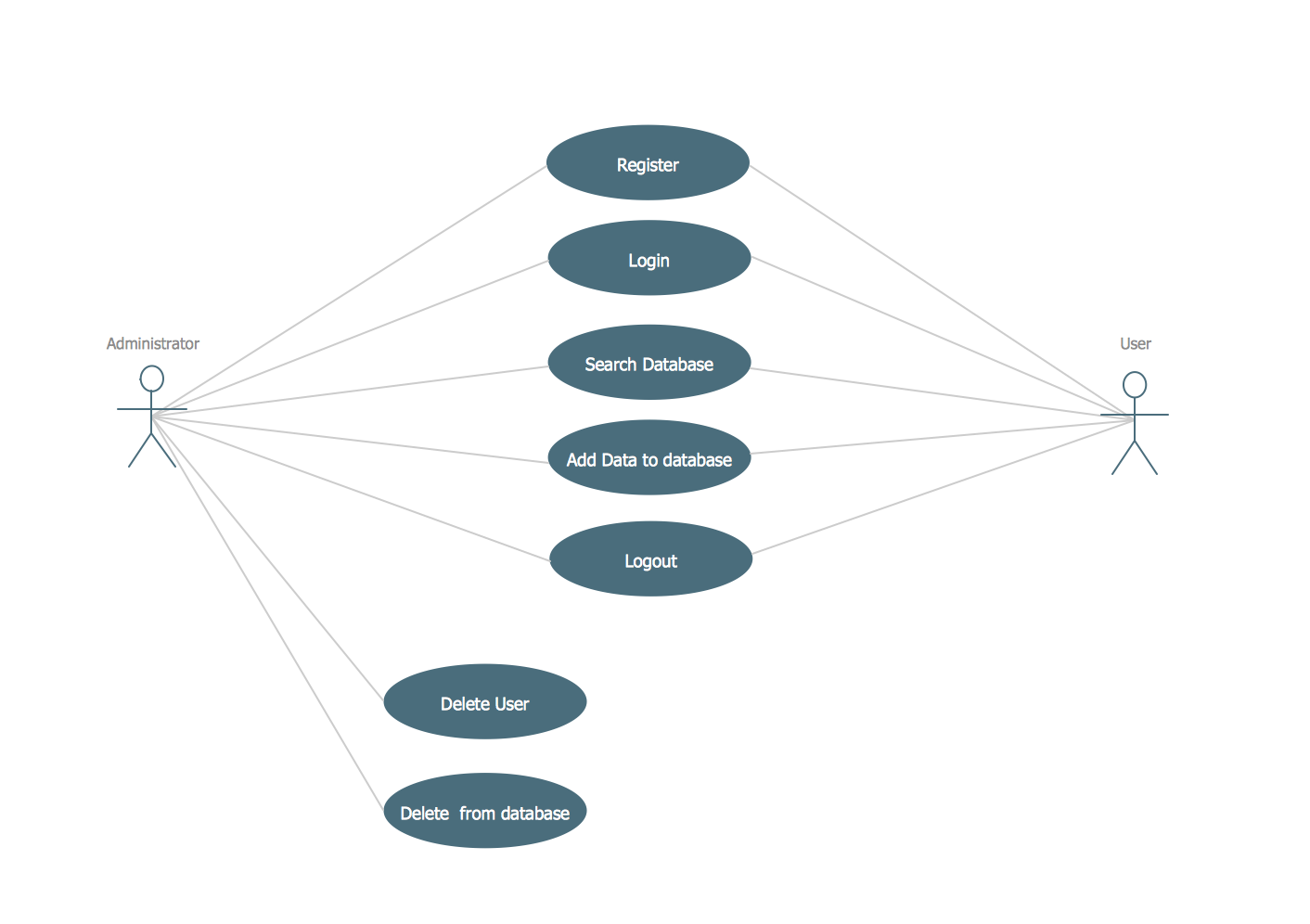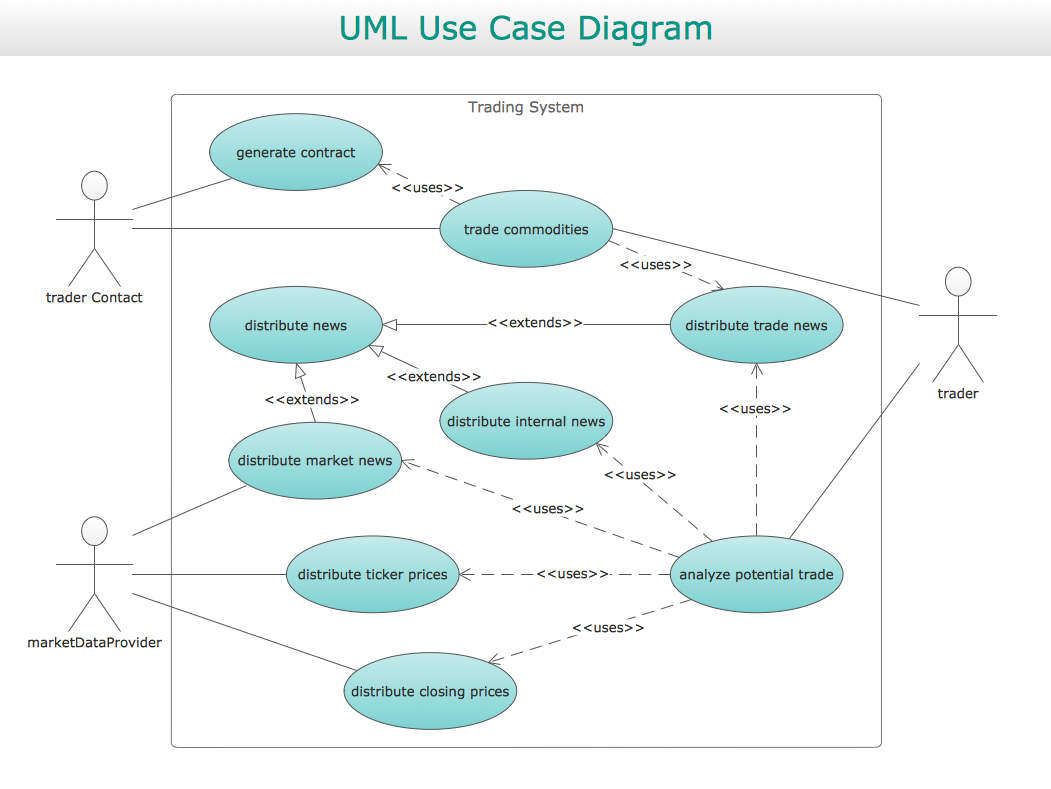UML Use Case Diagram Example. Registration System
This sample was created in ConceptDraw DIAGRAM diagramming and vector drawing software using the UML Use Case Diagram library of the Rapid UML Solution from the Software Development area of ConceptDraw Solution Park. This sample shows the types of user’s interactions with the system and is used at the registration and working with the database system.Flowchart Software
Flowchart is a simple diagram, map or graphical schematic representation the sequence of actions within a process. It is ideal for displaying how a process currently flows or can function ideally. The Flowcharts let define the steps and boundaries of a process, uncover problems or miscommunications. The Flowcharts are widely used in education, software development, business, economics, thanks to their visuality they are ideal for presentations, reports, for using on conferences to help the audience comprehend the content better, or easy find flaws in a process flow diagrams. ConceptDraw DIAGRAM is professional flowcharts software and feature-rich flowchart maker, which supports Mac OS X and Windows. It contains at ConceptDraw Solution Park a rich set of stencils and professional flowchart symbols for design. It lets create simply professional-looking Flowcharts based on thousand free flowchart templates, colored symbols and examples. ConceptDraw DIAGRAM is a 3 times cheaper alternative to MS Visio available for both Mac and PC. It’s is another full featured business and technical diagramming application that can easily take care of Visio files within OS X. Another bonus with ConceptDraw DIAGRAM – it's cross-platform. You can work on a document in both OS X and Windows, skipping Visio entirely.
Use Case Diagrams technology with ConceptDraw DIAGRAM
Use case diagrams are used at the development of software and systems for definition of functional system requirements or system of systems. Use case diagram presents the consecution of object’s actions (user’s or system’s) which are executed for reaching the definite result.- DFD Library System | Example of DFD for Online Store (Data Flow ...
- Dfd Diagram For Login System
- AWS Architecture Diagrams | Flow Chart Of News Portal System
- Login Flow Chart Sample
- Login and registration processing | Flowchart | Basic Flowchart ...
- AWS Architecture Diagrams | Transportation Portal Dfd
- How to Use ConceptDraw Single User License | Flowcahrt Logout
- Er Model For Application Logout Process
- Login and registration processing | Login and registration ...
- Flowchart Login System
- Dfd Diagram Example Login And Register
- Data Flow Diagram Login
- Flowchart | Process Flowchart | Event-driven Process Chain ...
- Simple Dfd Diagram For Login
- Data Flow Diagram
- Flowchart For Login System
- Class Diagram For Login
- Login Flow Diagram
- UML Use Case Diagram Example Registration System ...


